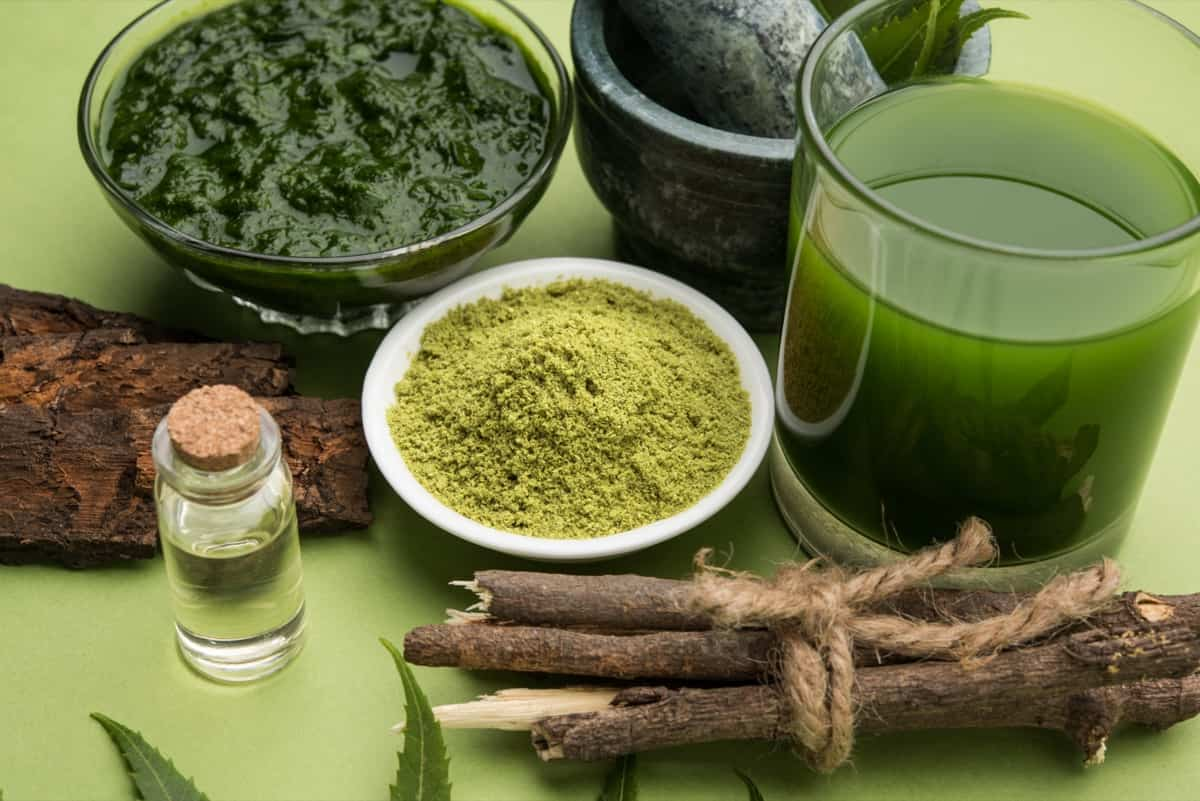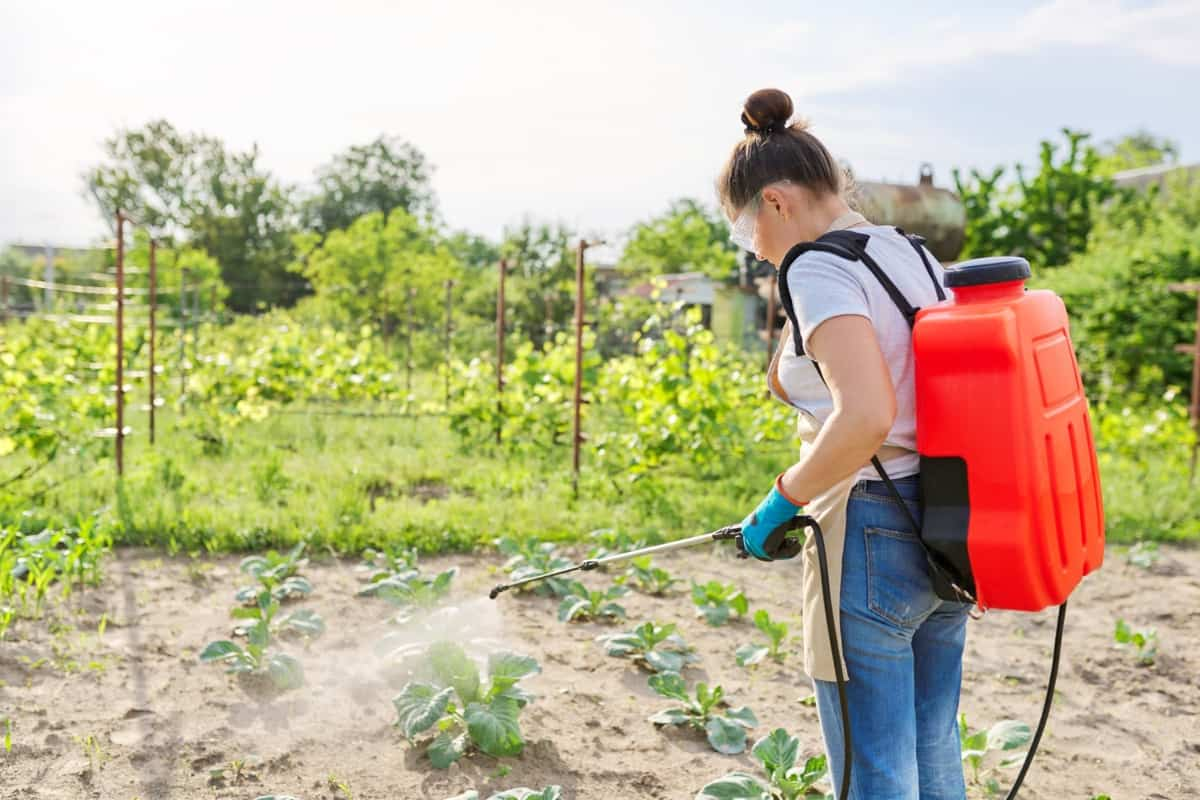Are you tired of battling pesky garden pests without harming the environment or your beloved plants? Look no further! This comprehensive blog post delves into the incredible world of Neemastra, a natural and effective pesticide derived from the mighty neem tree. With a touch of simplicity and a dash of engagement, we will walk you through creating your own Neemastra pesticide. Get ready to unlock the secrets of neem and its exceptional properties, making it a powerhouse in pest control.

Making and Using Organic Neem-based Pest Control
Introduction to Neem and its Benefits as a Natural Pesticide
Neem-based pesticides offer a natural and eco-friendly alternative to synthetic chemicals. They are biodegradable, less toxic to non-target organisms, and economically viable. Belonging to the Meliaceae family, neem is an evergreen tree that can reach impressive heights of 25 meters with a girth of 2.5 meters.
- Its bountiful non-wood products, including leaves, bark, flowers, fruits, seeds, gum, oil, and neem cake, surpass any other tree species.
- The applications of neem extend beyond traditional medicine. In the cosmetics industry, neem finds its way into face masks, lotions, sunscreens, soaps, and toothpaste.
- In agriculture, neem-derived products offer a sustainable solution to pest control issues. They act as potent insect growth regulators and can even fertilize plants.
- In India, neem has long been used in farming practices to manage pests and nourish plants. Scientific studies have confirmed its safety for agricultural workers throughout the crop production cycle.
- The residual material from neem seed oil extraction, known as neem seed cake, serves as a biofertilizer, enriching the soil and promoting plant growth.
- Notably, neem exhibits nitrification inhibitory properties, effectively reducing nitrogen loss from urea fertilizers and benefiting soil health.
- Its complex composition enables it to function as an anti-feedant, growth regulator, sterilant, insecticide, antifungal agent, and repellent. Additionally, neem-based products offer low toxicity to non-target organisms, making them ecologically favorable.
- With its many benefits, neem plays a vital role in organic agriculture. Farmers can contribute to sustainable production systems that minimize chemical residues by embracing neem as an organic pesticide and soil fertilizer.
- The adoption of biopesticides aligns with the increasing demand for environmentally friendly products and supports the growth of organic agriculture.
What is Neemastra?
Neemastra is a natural pesticide derived from the neem tree (Azadirachta indica). It is an eco-friendly alternative to synthetic chemical pesticides. Neem extracts have been traditionally used in India for pest control and plant nutrition. Neemastra is biodegradable, less toxic to non-target organisms, and economically viable.
Its various components, such as neem oil and neem cake, possess insecticidal properties and act as insect growth regulators. Neemastra is effective against many pests and can be used in organic farming. Its use promotes sustainable agriculture practices while minimizing harm to the environment.
Benefits of Neemastra
- Effective Pest Control: Neemastra, with its neem extract, demonstrates high effectiveness in controlling a wide range of pests, particularly sucker pests, rice weevils, caterpillars, and more.
- Soil Fertility Enhancement: Alongside pest control, Neemastra improves soil fertility, promoting healthier plant growth and development.
- Long Shelf Life: Once prepared, Neemastra can be stored for up to 6 months, providing a convenient and reliable solution for future pest control needs.
In case you missed it: How to Make Neem Oil from Neem Leaves: A DIY Steps and Application Procedure in Plants

How to Prepare Neemastra
Ingredients Required for Neemastra
- 200 liters of water
- 10 liters of cow urine
- 10 kg of desi cow dung
- 10 kg of neem leaves and stem
- Always use a clean wooden stick for stirring to prevent maggot formation in the pesticide.
- Store the mixture in a shaded area and cover it with a mesh or plastic mosquito net to avoid houseflies and maggots.
- Stir the pesticide twice daily.
- Storage duration: Neemastra should be used immediately after preparation. It is not suitable for long-term storage.
- How to use the pesticide: Neemastra is applied through a foliar spray. Use a spraying system to apply the pesticide to the plants.
- When to use the pesticide: The best time to spray Neemastra is between 6 am and 8.30 am or between 4 pm and 6.30 pm.
- Pests controlled by the pesticide: Neemastra is effective against sucking pests and mealybugs. Neemastra, the organic pesticide derived from neem, effectively controls various garden pests. It targets common pests such as aphids, mealybugs, caterpillars, and whiteflies. Using Neemastra, you can protect your garden plants from these pests and promote a healthy and thriving garden environment.
Making Neemastra at Home
- Add 10 liters of cow urine to 200 liters of water.
- Mix 10 kg of cow dung into the water-urine mixture.
- Crush the 10 kg of neem leaves.
- Allow the solution to ferment for 24 hours.
- Stir the mixture twice a day using a wooden stick.
- After 24 hours, filter the solution using a cloth that is ready to use.
Application and Usage of Neemastra Techniques
- Application: To prepare neemastra organic pesticide, crush neem leaves in 50 liters of water. Mix these crushed neem leaves and water with cow dung and urine in a plastic drum or earthen pot. Allow the solution to ferment for 24 hours under shade, stirring it 5 to 6 times a day with a wooden stick. In winter, extend the fermentation time to 48 hours. After 24 hours, filter the solution using a cotton cloth. Dilute the filtered solution in 100 liters of water for application. This solution is suitable for one acre of farmland.
- Usage: Neemastra can be used periodically, once a month, as a foliar spray. Alternatively, it can be applied during early mornings or evenings when plants or crops are infested with pests.
Targeting Garden Pests with Neemastra
- Identify the pests: Observe your garden plants for signs of pest infestation. Common garden pests include aphids, mealybugs, caterpillars, and whiteflies.
- Prepare Neemastra: Follow the preparation process for Neemastra, as mentioned earlier, using neem leaves, water, cow dung, and cow urine. Allow the solution to ferment for 24 hours and then filter it.
- Dilute the solution: Dilute the filtered solution in water. The exact dilution ratio may vary, but a common recommendation is to dilute it in a ratio of 1:10 (1 part Neemastra solution to 10 parts water).
- Apply the solution: Use a sprayer to apply the diluted Neemastra solution to the affected plants. Ensure thorough coverage, targeting both the upper and lower surfaces of the leaves.
- Timing and frequency: Spray the Neemastra solution early in the morning or the evening when the temperature is cooler. Regularly repeat the application every 7-10 days or as needed, especially after rainfall or heavy pest activity.
- Monitor and assess: Regularly monitor your plants for pest activity and assess the effectiveness of Neemastra. If necessary, adjust the frequency of applications or consider additional pest management strategies.
In case you missed it: Gardening with Neem Oil: An Organic Solution for the Environment

Conclusion
Organic neem-based pest control, such as Neemastra, offers an effective and environmentally friendly solution for protecting your garden plants. Following the proper preparation and application techniques, you can effectively manage pests and promote healthy plant growth in your garden.
- Feed Your Flock for Less: Top 10 Tips to Save on Chicken Feed
- Ultimate Guide to Ossabaw Island Hog: Breeding, Raising, Diet, and Care
- Hatching Answers: The Top 10 Reasons Your Chickens Aren’t Laying Eggs
- Eggs and Economics: Breaking Down the Cost of Raising Backyard Chickens
- Defend Your Greens: Proven Methods to Keep Iguanas Out of Your Garden
- Ultimate Guide to Cinnamon Queen Chicken: A Comprehensive Guide for Beginners
- Ultimate Guide to California Tan Chicken: Breeding, Raising, Diet, Egg-Production and Care
- Ultimate Guide to Marsh Daisy Chicken: Breeding, Raising, Diet, and Care
- 10 Types of Chicken Farming Businesses You Can Start for Profits